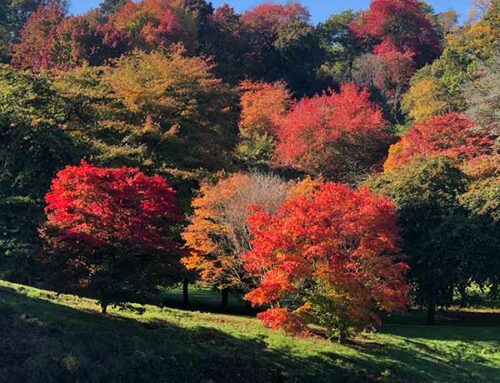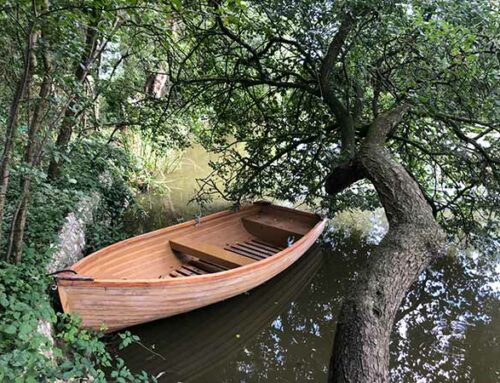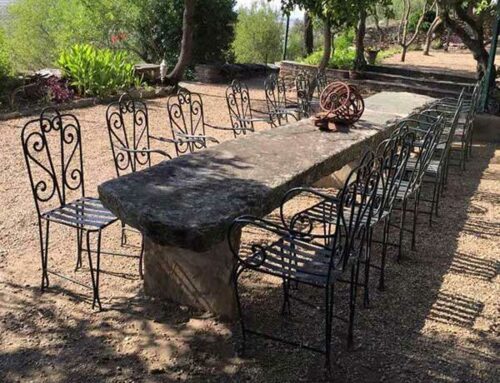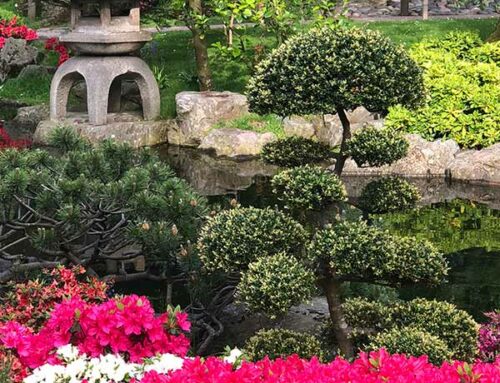Plant Hunting At Abbotsbury Sub-Tropical Gardens
Abbotsbury Sub Tropical Gardens on Dorset’s south coast are 20 acres of grade 1 listed 18th century gardens with a magnificent collection of rare and unusual trees.
The gardens are a rare example of tropical plant life in the UK and are made possible by the microclimate of a wooded and sheltered valley leading to the sea.
Strolling around Abbotsbury Gardens you feel transported back to the golden age of Victorian plant hunters and inspired to create your own garden paradise at home.
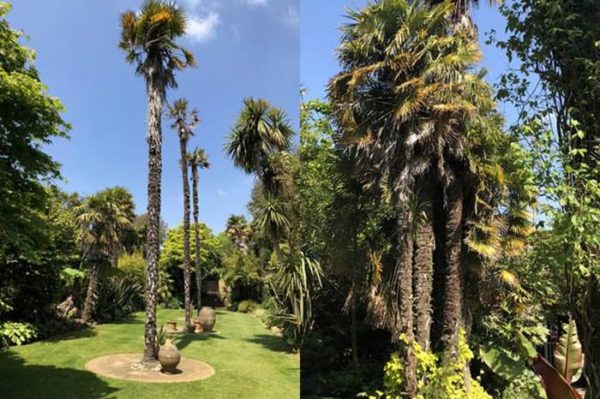
Subtropical Palm Trees at Abbotsbury Gardens
History of Abbotsbury Sub Tropical Gardens
The quaint village of Abbotsbury is named for St Peter’s Monastery that once thrived there but was destroyed in 1539 by the dissolution. The land was leased to Sir Giles Strangways who turned part of the former monastery into a mansion for his family.
A walled kitchen garden was built in the 1700s to provide food for the mansion house and now lies right at the heart of the modern gardens.
In 1808 open fields surrounding the mansion were enclosed and a woodland was planted by the 3rd Earl of Ilchester, Henry Fox-Strangways.
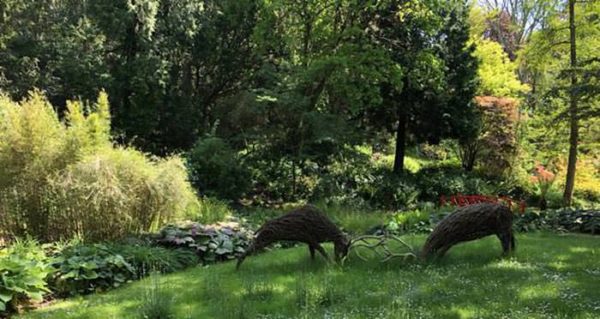
Willow Deer Sculptures at Abbotsbury Garden.
The Victorian Plant Hunters
The Earl’s successor William Fox-Strangways was a renowned plant hunter and expert on European flora.
He brought back many newly discovered species from his diplomat service travels including Chile’s Citronella Mucronata and the Mexican seeds of genus ‘Stranvaesia’ named after the family name ‘Strangways’. It’s now known as one of our favourite hedging plants – the Photinia.
These exciting tropical plants were soon integrated into his woodlands where the shade, damp soil, and warm southern climate provided the perfect habitat.
Over the years new plants and seeds originating from Japan, China, and the Himalayas joined them and the garden grew to three times its original size. A garden catalogue printed in 1899 lists over 5,000 different species many of which still survive there.
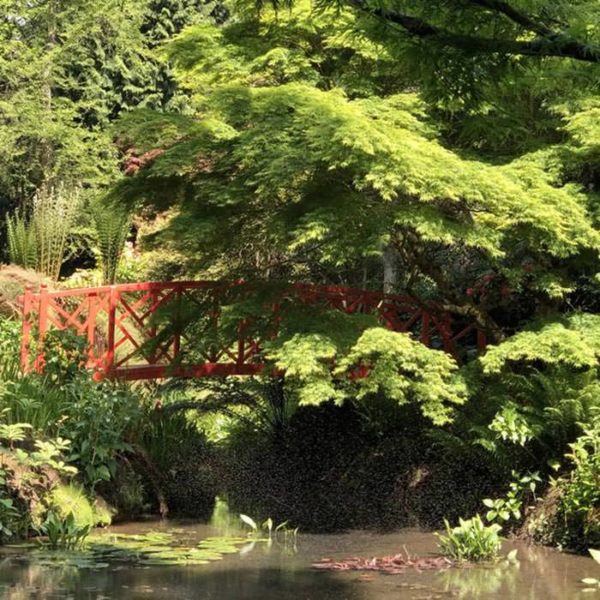
Enjoy the walk and admire this beautiful mature Japanese Acer Seiryu
Disrepair During The War Years
In 1913 the mansion burned down. It was rebuilt during 1915 but to a poor standard and was eventually demolished in 1934. A small section remains of the outer wall.
In the 1920 and 1930s, when labour was in short supply, the gardens were neglected and quickly disappeared beneath bamboo and weeds.
During WW2 the West Lawn was occupied by the Dorset Light Infantry Regiment and the mansion site by the Polish Pioneer Corps who practiced manoeuvres and watched the coastline of Chesil beach for invading German forces.
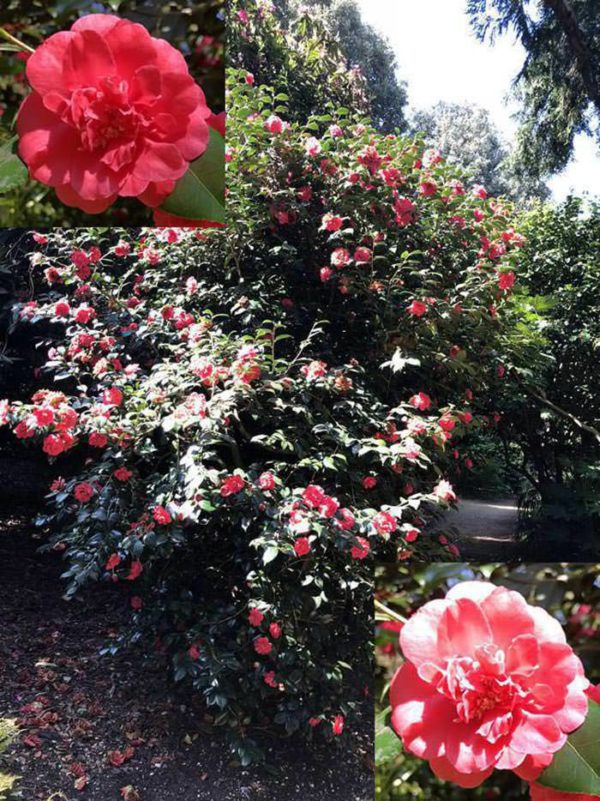
Camellia Tree in flower at Abbotsbury garden.
What’s At Abbotsbury Gardens Today?
The gardens were restored in the 1960s by Lady Teresa Agnew and her husband Lord Galway, but the great storm of 1987 caused considerable damage to the buildings and tender tropical plants.
After a long history of high and lows, Abbotsbury Gardens have been restored to their former glory with the addition of many new tropical plants.
The beautiful old areas still exist including the magnolia walk, which is a particular treat ending with a superb elevated view of the Jurassic coastline, and the nationally important collection of rhododendrons, azaleas, and hydrangeas.
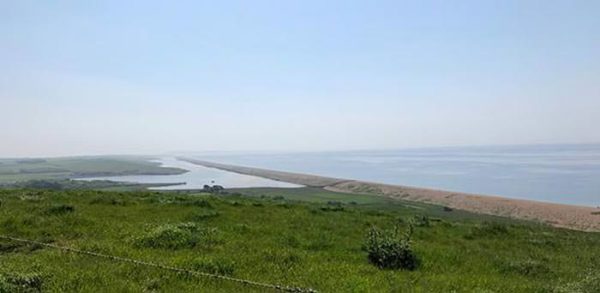
View of Chesil Beach on the Jurassic Coast from the top of Abbotsbury gardens.
The mature camellia groves are a must-see of blazing colour as are the centuries-old ornamental tree specimens, tree ferns, and palms in the woodland gardens.
The gardens have been divided into zones to best show off plants from different countries and new areas have been added in recent years. These include a nature trail, a children’s play area, sunken gardens with resident golden pheasants, large tearooms, restaurants, and a new plant shop where you can buy specimens from the gardens.
Weddings are regularly held in the garden pavilion throughout the year alongside food fayres, sculpture trails, and ancient willow weaving workshops. An autumn treat for the family are the illuminated Halloween evenings that light up this tropical paradise from all angles.
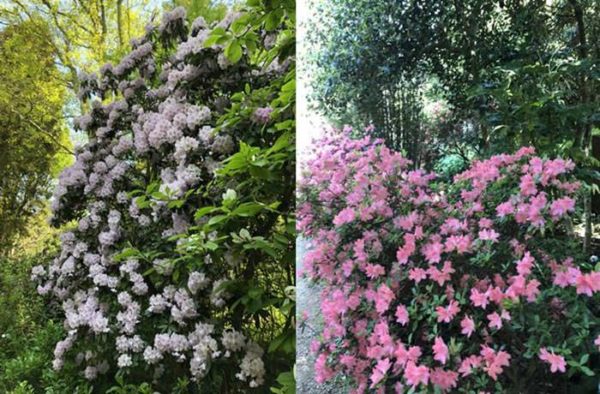
Collection of Rhododendrons & Azaleas in flower
Modern-Day Plant Hunters
Plant hunters still exist at Abbotsbury subtropical gardens. A new variety of Pittosporum Tenuifolium spontaneously grew in its microclimate and has been named Pittosporum Tenuifolium Abbotsbury Gold for its glossy-green and variegated foliage.
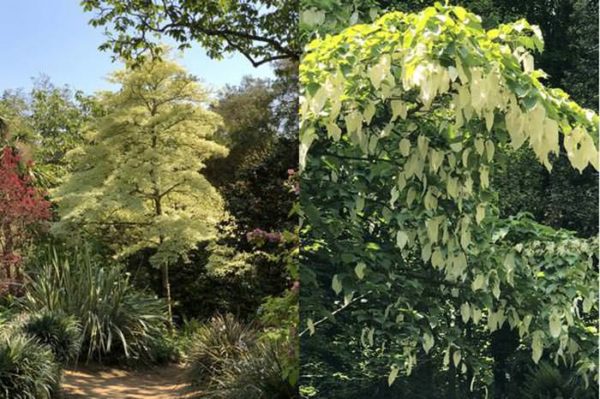
Abbotsbury’s Cornus Contraversa & Spectacular Davidii Involucrata specimen trees
Visiting Abbotsbury Gardens
Once the country opens up again, if you’d like to visit Abbotsbury sub-tropical gardens, wear comfortable shoes because you’ll want to explore all the rare and unusual plants that are packed into its twenty acres.
Make sure you leave enough time to feed the swans at nearby Abbotsbury Swannery whose history is intwined with the gardens. The swannery was built to feed the ill-fated monks of the 15th century and is only a five-minute drive away.
Abbotsbury Gardens are a glorious mixture of history, heritage, and stunning plants.
The micro-climate supports enough rare and unusual plant-life to satisfy the most demanding modern-day plant hunter and there are modern facilities to make your visit comfortable.
Arrive early to make the most of your day and spend a few relaxing hours just soaking up the atmosphere of this very special place.
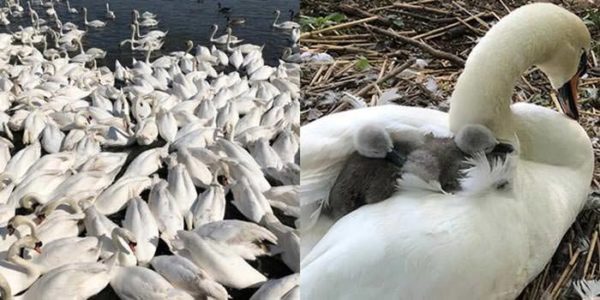
Meet the swans and baby cygnets at nearby Abbotsbury Swannery
You may also be interested to read >>
Overbecks Garden, Salcombe, Devon
Sub Tropical Gardens at Tresco, Isles of Scilly

